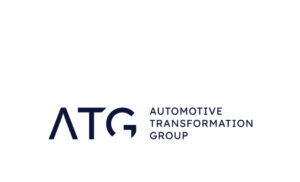Employers facing tough decisions over redundancies as furlough changes loom

EMPLOYERS are facing tough decisions over redundancies as they consider what furlough changes will mean for their businesses.
The government’s furlough scheme becomes more flexible on July 1 with a change designed to help businesses start to ease back into operation after lockdown.
But for many business owners it’s the looming increased contributions they need to make to the scheme, which take effect a month later on August 1, that are keeping them awake at night.
Joanne Stronach, Head of Employment Law at leading legal firm Cartmell Shepherd Solicitors, says the prospect of having to make redundancies is real for many businesses.
And due to the impending changes to the furlough payment contributions, and timescales needed for redundancy procedures, many businesses can’t afford to delay those decisions for much longer.
Joanne said: “We are advising businesses of all shapes and sizes and it is a period of anxiety for a lot of employers.
“A lot of business owners will be losing sleep at the moment about what it all means for their business.
“We are here to help take away that anxiety by giving employers expert advice on all aspects of employment law.
“We are able to talk business owners through all the changes and advise them on what it means for them and their business.
“And if it means that starting a redundancy process is the only option for them then we are here to help and advise them every step of the way.”
Key changes to the furlough scheme which are on the horizon which involve business owners having to make increasing contributions to furloughed staff are:
• From August 1, employers have to start contributing to the payments for furloughed employees. They will be required to meet the cost of employer National Insurance contributions and employer pension contributions. This is estimated to be equivalent to about 5%. (This is because these amounts can no longer be reclaimed from the government. The government will however maintain its payments for furloughed staff of 80% of salary capped at £2,500 per month).
• From September 1, employers will also have to pay 10% towards an employee’s wages as well as National Insurance contributions and pension contributions. (This is because the government will reduce its payments for furloughed staff to 70% of salary capped at £2,187 per month).
• From October 1, employers will have to pay 20% towards an employee’s wages as well as National Insurance contributions and pension contributions. (This is because the government will reduce its payments for furloughed staff to 60% of salary capped at £1,875)
From November 1, there is also the added concern that the government’s furlough scheme is likely to stop altogether – making October 31 a ‘cliff edge’ for many businesses.
Joanne said: “Businesses who are thinking they may not be able to bring their staff back are having to think now in terms of redundancies.
“I advise some large multi-million pound businesses. Some will be looking at proposing 20 redundancies or more which means they will need to go into a 30-day collective consultation period and will be consulting with individuals and with unions. If there are 100 or more redundancies proposed then they will need to have a 45-day consultation. We make sure those businesses are fully aware of all the complexities of those processes.
“On a smaller scale I am also talking to business owners of small businesses who have never had to make anybody redundant before and are facing this for the first time and need expert advice to help them through the process.
“Some of those businesses are looking at the increasing contributions they will need to keep their staff furloughed in August, September and October, doing the number crunching now and, unless the business comes back quickly, are faced with having to go through that process and need the correct advice.
“Some are saying even the 5% extra contribution from the start of August is going to be too much for them, so they are having to make their decisions in early July to ensure there is sufficient time for a fair redundancy consultation process and any notice periods for staff.
“The announcement about reducing the social distancing from 2m to 1m+ and more businesses being able to reopen from July 4 is welcome because it means more businesses will be able to operate with potentially more staff and allowing in more customers. But, if the work is not coming in, and the revenue is not coming in, then they are faced with some tough decisions on their levels of staffing.
“Hotels and restaurants will be able to be open from July 4, but it’s about the public having confidence to want to stay in those hotels, and eat in those restaurants.
“Some businesses are saying that they don’t think they will be back to the same level of business until well into 2021.
“And if businesses are looking at blank order books, or very few bookings, they’re going to have to make decisions about making redundancies while they are still receiving some financial support from the government before the major changes to furlough kick in.”
Joanne advises there are many pitfalls to avoid for businesses who find themselves in that situation – in order to make sure they comply with employment law.
“If you’ve got six mechanics and you only need four mechanics, for example, then you are going to have to pool those employees. And that means you need to create fair, reasonable, objective, selection criteria for that redundancy process.
“Some employers might think that if you’ve had some staff working, and some staff on furlough, that you can just select those on furlough for redundancy. You can’t do that. It could lead to those employees being able to claim unfair dismissal.
“Choosing selection criteria can be tough for employers as well because the future of their business is so unclear right now. They might not know which suppliers are going to continue and which, or how many, customers are coming back, so they might not know what skills the business will need.
“Social distancing is another issue employers need to think about when going through a redundancy process in terms of how they are going to communicate and consult with their staff.
“Redundancy consultation meetings might need to be by telephone conference call or video conference.
“Employers also need to think how they are going to ensure employees have plenty of opportunity to feed into the process, including with alternative suggestions or ways to avoid redundancy.
“It’s important employers give staff as much information as they can as early as they can in order to make sure the consultation is meaningful.
“There is a lot for employers to be aware of, as well as worrying about running their business on a day to day basis and putting the necessary social distancing measures in place, and that’s why we are here to help.”





